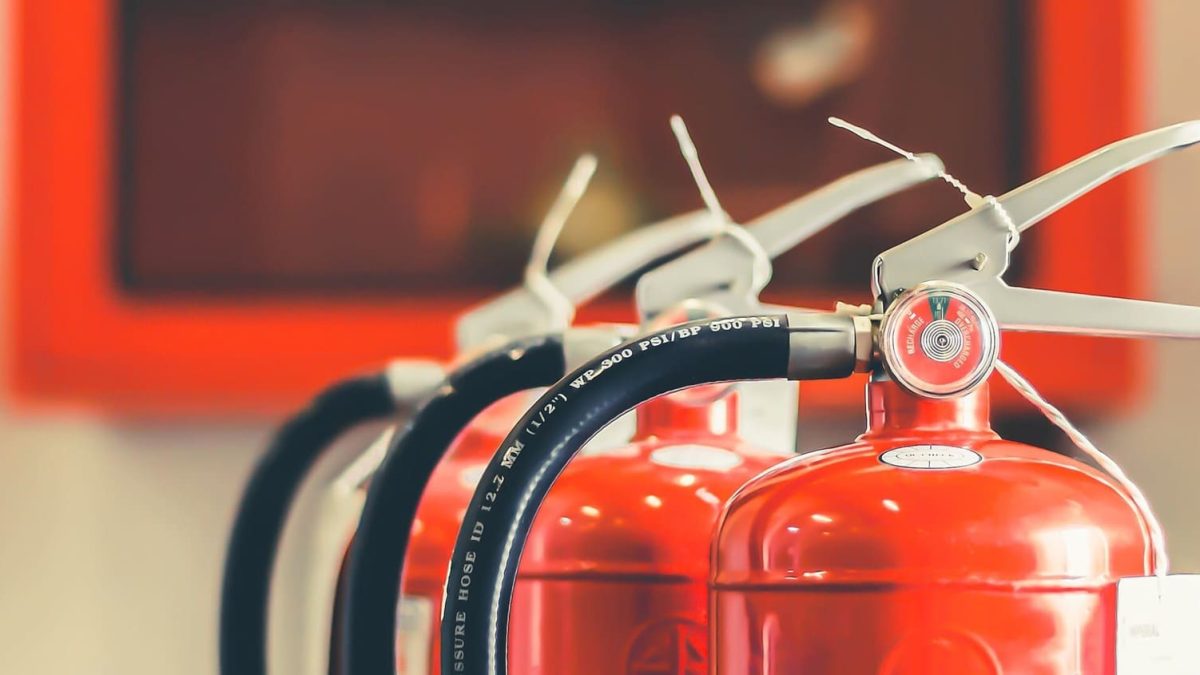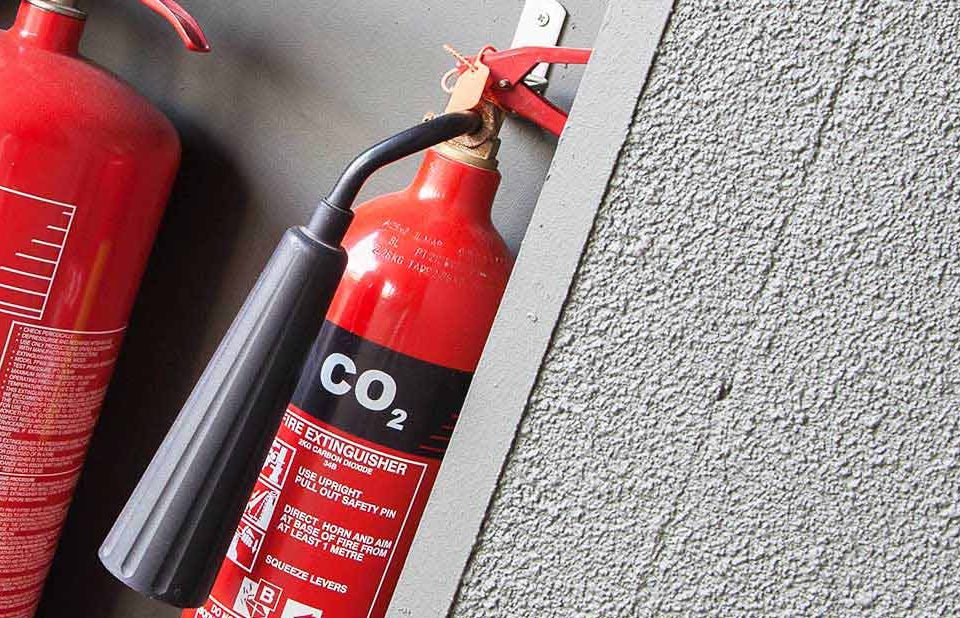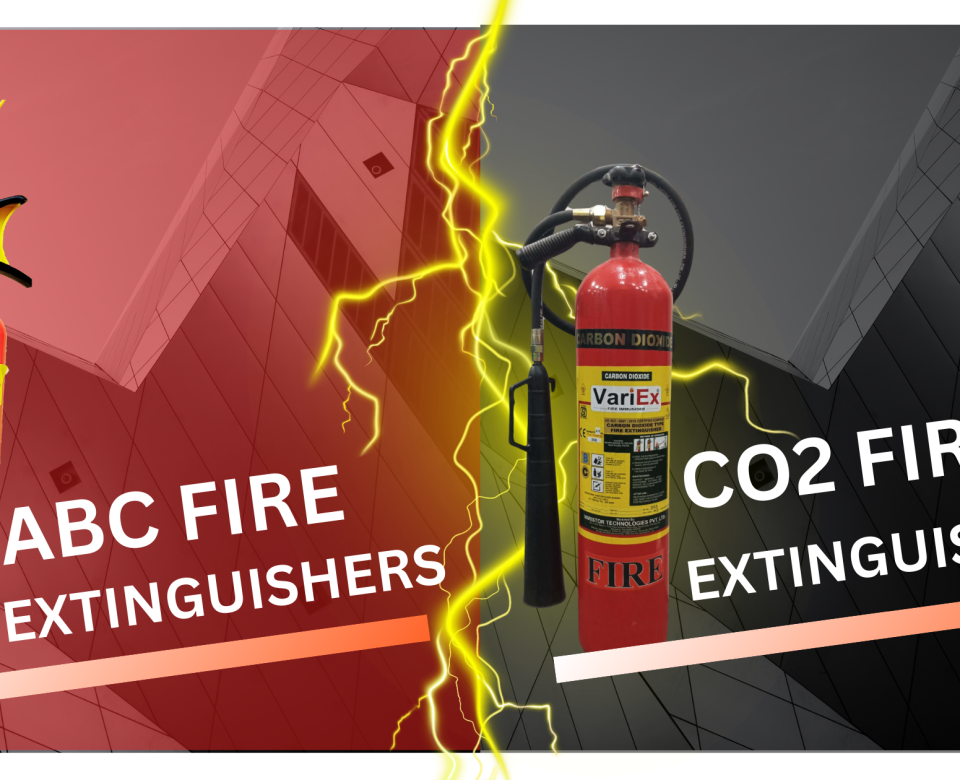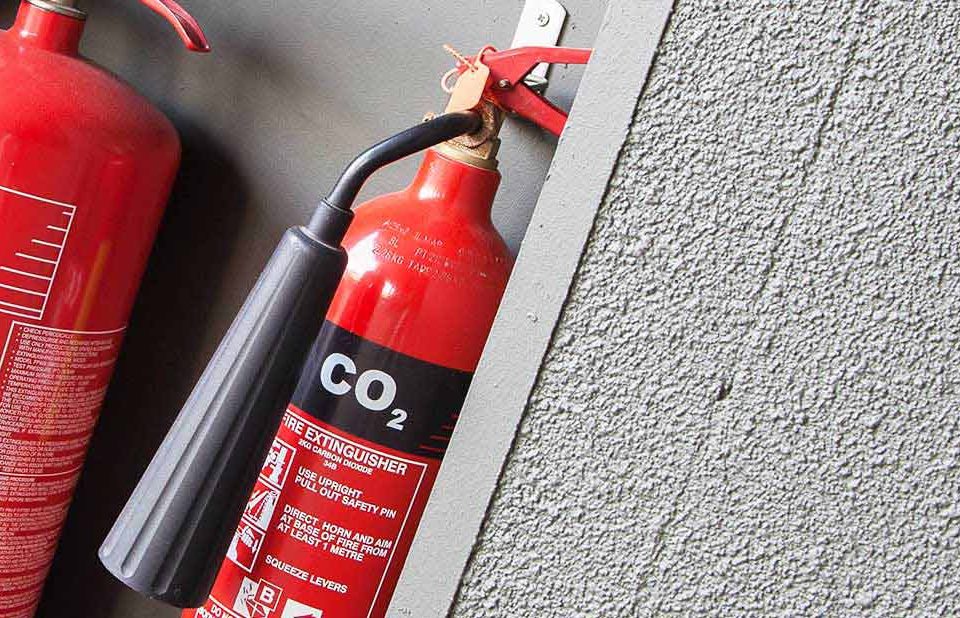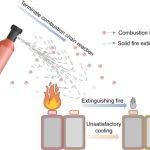
How Fire Extinguishers Work – Cooling, Smothering, and Chemical Interruption?
August 14, 2025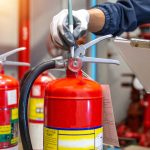
Fire Extinguisher and Their Role in Smart Building Safety Networks
August 21, 2025Fire extinguishers are essential lifesaving devices that play a crucial role in fire safety and emergency preparedness. Whether at home, in offices, factories, or vehicles, having a properly functioning fire extinguisher can make the difference between containing a fire quickly and facing a major disaster. While many people focus on the types of extinguishers or their fire-fighting agents, one key aspect often overlooked is fire extinguisher cylinder care. Taking good care of the extinguisher cylinder is vital to maintain its reliability and performance by preventing damage and leaks.
In this blog, we will explore the importance of fire extinguisher cylinder maintenance, common problems that threaten their usability, and simple steps you can take to ensure your extinguisher stays in top condition. We will also touch on related items like the fire extinguisher ball, fire blanket, and provide tips relevant to the Pakistani market including fire extinguisher ball price in Pakistan and fire extinguisher price considerations.
Understanding Fire Extinguisher Cylinders
The cylinder is the heart of a fire extinguisher, it holds the pressure and stores the extinguishing medium safely. Typically, fire extinguisher cylinders are made from strong metals such as steel or aluminum to withstand the high pressures inside. The choice of material depends on the extinguisher type, usage, and environment.
Here are some common extinguisher types and their cylinder characteristics:
- CO2 fire extinguisher: Uses carbon dioxide gas (CO2) stored under very high pressure inside a seamless steel cylinder. This type works well on electrical fires and flammable liquids.
- Wet chemical fire extinguisher: Contains a special wet chemical agent for fires involving cooking oils or fats, often with an aluminum or steel container.
- Car fire extinguisher: Generally compact and portable, designed with lightweight but durable materials for quick vehicle fires.
Despite their sturdy construction, cylinders can develop damage and leaks over time due to many factors. That’s why knowing how to care for your extinguisher cylinder is essential to ensure it remains dependable when you need it.
Common Causes of Cylinder Damage and Leaks
Understanding what causes damage and leaks helps you prevent them:
- Physical Impact or Mishandling: Accidentally dropping a fire extinguisher, knocking it against walls, or improper transportation can cause dents, cracks, or valve damage. Even minor dents may weaken the cylinder’s structural integrity.
- Corrosion and Rust Buildup: Cylinders exposed to moisture or humid environments can develop rust, this is especially common in steel cylinders. Rust not only weakens the metal but also can lead to unseen leaks.
- Manufacturing Defects or Low-Quality Materials: Some extinguishers, especially those bought based on lower fire extinguisher price, may come with compromised quality. A faulty cylinder wall or a low-grade valve may fail under pressure.
- Exposure to Extreme Heat or Sudden Pressure Changes: High temperatures can cause internal pressure spikes, damaging the cylinder walls or valves. Similarly, large pressure changes during use or storage can lead to damage or leaks.
- Improper Storage Conditions: Storing extinguishers directly under the sun, in damp areas, or close to corrosive chemicals increases the risk of cylinder deterioration.
Best Practices for Fire Extinguisher Cylinder Care
Proper care is simple if you follow these best practices:
- Proper Storage: Keep fire extinguishers in cool, dry places away from direct sunlight or heat sources. Avoid damp basements or outdoor areas where humidity can cause rust. Ideally, use wall brackets or cabinets.
- Regular Cleaning: Clean the cylinder surface with a dry or slightly damp cloth to remove dust and dirt. For mild rust spots, gently using fine sandpaper or rust remover can help prevent spreading.
- Safe Handling: Always lift extinguishers by their handles, avoid throwing or dropping, and handle the valve and hose gently to prevent damage. Avoid leaning the extinguisher on sharp edges or placing heavy objects on top.
- Check Safety Pins and Seals: The safety pin and tamper seal keep the extinguisher from accidental discharge. Ensure these are intact and replace missing or broken parts immediately.
- Avoid Chemical Exposure: Do not store extinguishers near acids, alkalis, or other reactive substances that may corrode the cylinder.
Proper care not only prevents damage but also helps extend the extinguisher’s lifespan, providing peace of mind.
Regular Inspection and Maintenance
Daily care is important, but regular inspections are equally critical:
- Visual Checks: At least once a month, visually inspect the extinguisher for dents, corrosion, cracks, or leaks. Check the pressure gauge; it should be in the green zone. Shake the extinguisher gently (if safe) to prevent settling of the contents.
- Professional Servicing: Hire certified fire safety technicians for more thorough inspections every year. They perform tasks like pressure testing (hydrostatic testing) that you shouldn’t attempt at home. Hydrostatic testing ensures the cylinder can withstand pressure safely.
- Know the Signs of Leaks: A hissing sound, noticeable drop in gauge pressure, or moisture/residue near the nozzle may indicate a leak and require immediate attention.
- Legal and Safety Standards: Many countries, including Pakistan, have regulations on inspection intervals and maintenance standards. Failures to comply can result in heavy penalties and unsafe workplaces.
What to Do If You Notice Damage or Leaks
If you discover your extinguisher cylinder is damaged or leaking, take these steps right away:
- Remove from Service: Take it off the wall or storage area immediately and keep it away from potential ignition sources.
- Do Not Attempt Makeshift Repairs: Patching or temporarily sealing leaks is dangerous and unreliable.
- Contact a Certified Fire Safety Technician: Qualified professionals can evaluate, repair (if possible), or recommend replacement.
- Replace When Necessary: If damage is severe, the extinguisher should be replaced rather than risk failure.
- Safe Disposal: Follow local guidelines for environmentally safe disposal—cylinders are pressurized containers and should be handled carefully.
Preventive Measures for Long-Term Safety
Long-term fire safety depends on awareness and good habits:
- Training: Make sure all family members, employees, or personnel know how to handle, inspect, and care for fire extinguishers.
- Maintenance Log: Keep records of each extinguisher’s inspection dates, servicing, and any repairs. This helps track maintenance history and alerts you when servicing is due.
- Invest in Quality Fire Extinguishers: While the fire extinguisher price may tempt you to buy cheaper units, investing in trusted brands ensures better durability and safety.
- Use Cylinder Covers or Cabinets: Protective enclosures guard cylinders against accidental knocks, UV exposure, and chemical spills.
- Supplementary Fire Safety Products: Consider adding tools like a fire ball (a self-activating extinguisher device whose price varies by model and region), fire blanket, or fire bucket. For instance, the fire extinguisher ball price in Pakistan is competitive and these devices can be installed in high-risk areas for automatic activation.
Conclusion
Fire extinguisher cylinder care is a fundamental aspect of fire safety that can’t be ignored. Regular maintenance, careful handling, correct storage, and prompt attention to leaks or damage keep your extinguisher functioning effectively. Remember, prevention is always better than emergency reaction.
If you want to protect your family or workplace genuinely, schedule professional inspections regularly and invest in quality fire safety products. Whether you need a car fire extinguisher, CO2 fire extinguisher, or a wet chemical fire extinguisher, prioritizing cylinder care ensures they perform reliably in emergencies.
Searching for trusted fire safety solutions at competitive prices? Contact Haseen Habib today for expert advice and high-quality fire extinguishers, fire balls, fire blankets, and more. Protect your assets and lives with the best fire safety equipment available in Pakistan!
FAQs
Q: How often should fire extinguisher cylinders be inspected?
A: Visual inspections should be monthly, professional servicing yearly, and hydrostatic testing every 5 years or as per local regulations.
Q: Can a leaking fire extinguisher be repaired?
A: Generally, no. Leaking cylinders should be replaced to ensure safety and reliability.
Q: What is hydrostatic testing and why is it important?
A: It’s a pressure test to check the cylinder’s strength and to prevent dangerous failures during use.
Q: How long does a fire extinguisher cylinder last?
A: Typically 5-15 years, depending on use, maintenance, and inspection outcomes.
Q: Where should fire extinguishers be stored to prevent damage?
A: In dry, cool places away from direct sunlight, heat sources, and corrosive chemicals.

